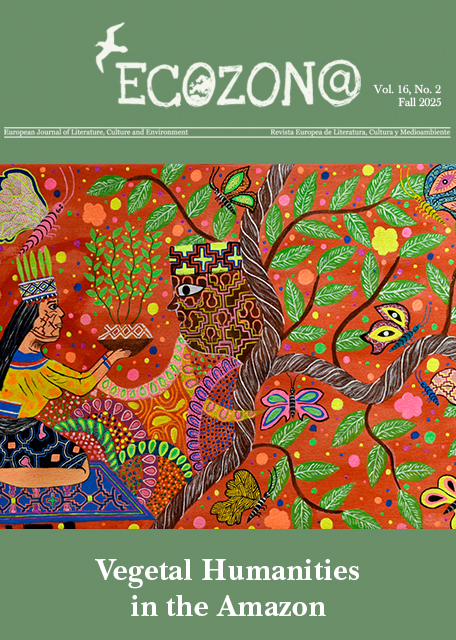Humanising the Nonhuman: An Ecocritical Toolbox for Anthropomorphic Agency
DOI:
https://doi.org/10.37536/ECOZONA.2024.15.2.4813Parole chiave:
anthropomorphism, material ecocriticism, nonhuman agency, treesAbstract
Ecocriticism tends to acknowledge anthropomorphisms as a possible tool to create empathy for nonhumans, but in doing so mostly labels said tool as too sentimental for serious environmental literature. This paper aims to establish a categorisation of anthropomorphisms in media that allows a more diverse and detailed analysis of humanised nonhumans. It seeks to overcome the prevailing idea that anthropomorphic descriptions are limited to nonhuman animals and therefore extends the term to the humanisation of anything that is not human. Following the school of thought suggested by new materialism and material ecocriticism, nonhumans are regarded as having agency and anthropomorphising them allows humans to empathise with nonhumans. The categorisation of anthropomorphism proposed here is divided into each three markers and modes. The markers signify which part of the human can be observed in the anthropomorphised subject, while the modes define how this is realised. This article exemplifies the concept of markers and modes through anthropomorphic trees in literature, but as it is not a static concept, it allows for overlaps between categories and dynamic adaptations for other cases of anthropomorphised subjects. The three markers are Physicality, Sentience, and Language and may appear also in combinations. The modes are Projection, Manifestation, and Hybridity. As anthropomorphisms strongly intersect with theories of nonhuman agency, this, too, will be discussed in the final section of this article.
Downloads
##submission.downloads##
Pubblicato
Fascicolo
Sezione
Licenza
Authors who publish with this journal agree to the following terms:
a) Authors retain copyright and grant the journal right of first publication with the work simultaneously licensed under a Creative Commons Attribution License that allows others to share the work with an acknowledgement of the work's authorship and initial publication in this journal (CC BY-NC for articles and CC BY-NC-ND for creative work, unless author requests otherwise.
b) Authors are able to enter into separate, additional contractual arrangements for the non-exclusive distribution of the journal's published version of the work (e.g., post it to an institutional repository or publish it in a book), with an acknowledgement of its initial publication in this journal.
c) Authors are permitted and encouraged to post their work online (e.g., in institutional repositories or on their website) prior to and during the submission process, as it can lead to productive exchanges, as well as earlier and greater citation of published work (See The Effect of Open Access).










